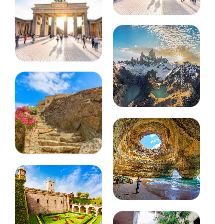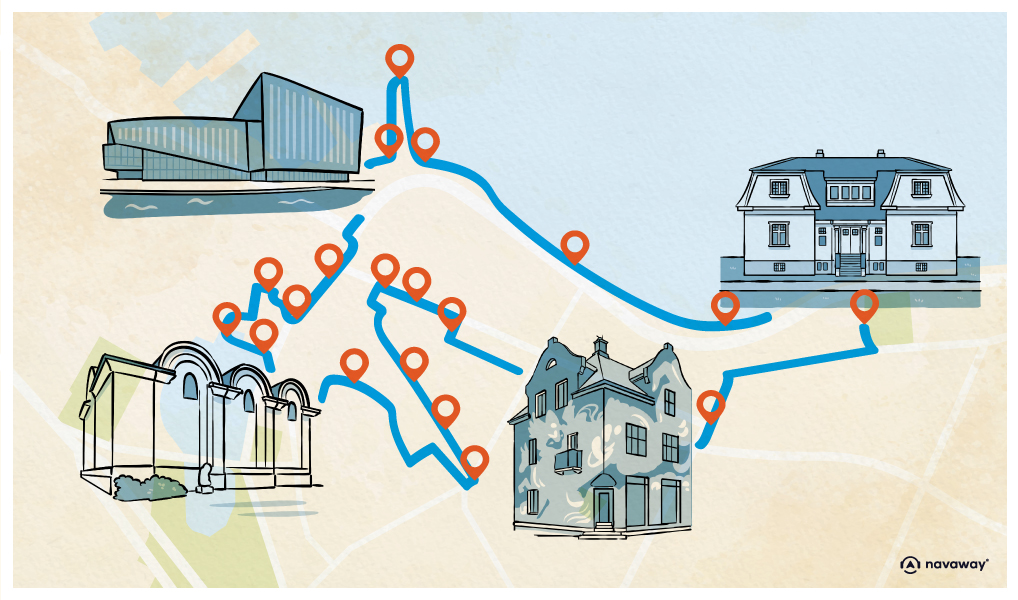
Glaciers & Ice Caves Iceland : Memorable Experiences
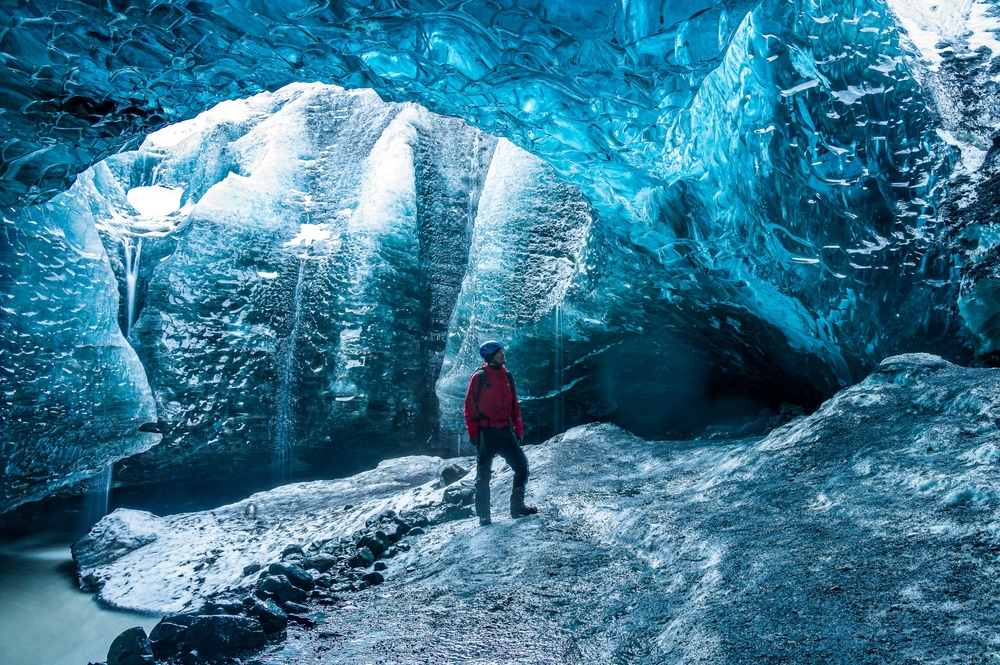
Iceland, a land of contrasts between fire and ice, offers some of the world’s most unique experiences for exploring its majestic glaciers and crystal-clear ice caves. From the man-made tunnels of Langjökull to the natural caves of Vatnajökull, glacier trekking and ice climbing, discover the most memorable adventures this northern island has to offer. Whether you’re a thrill-seeker or just contemplative, Iceland’s glaciers promise unforgettable memories.

Also read the Reykjavik guide :
- Top 10 culinary specialities in Reykjavik
- When is the best time to visit Iceland?
- Top 5 best places to stay in Reykjavik
- Top 5 things to do in Reykjavik
- When is the best time to visit Iceland?
1. Explore the natural ice caves of the Vatnajökull glacier
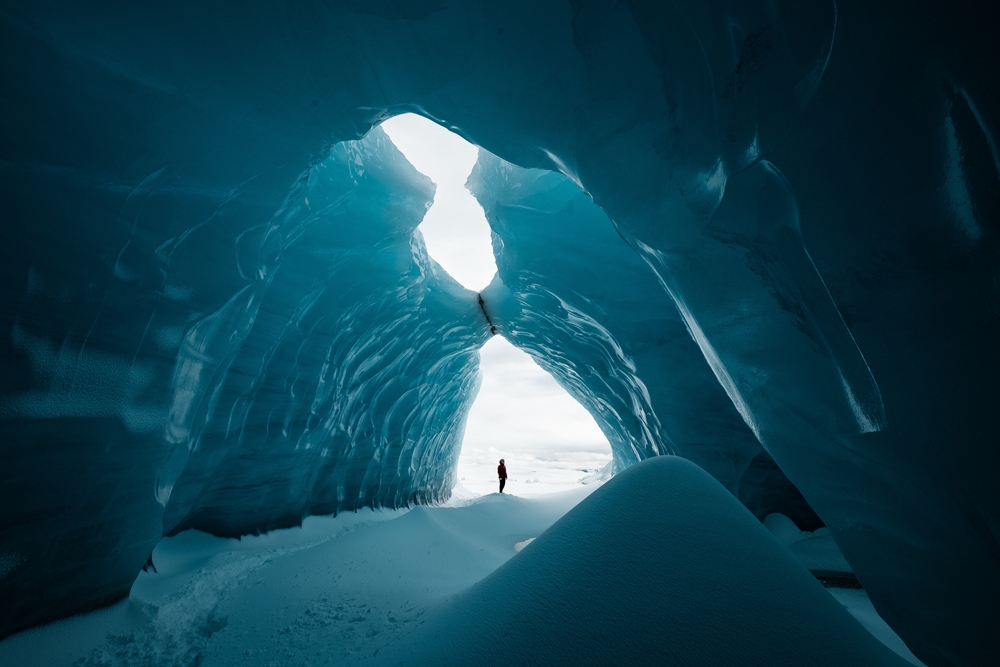
Visiting Reykjavik is often the starting point for glacial wonders, but it’s in the heart of Vatnajökull that Iceland’s most spectacular ice caves are hidden. Europe’s largest glacier is home to supernaturally colourful natural caves, including the famous Crystal Cave near Jökulsárlón.
This crystal-clear ice cave, accessible only from November to March, offers a dazzling spectacle with its translucent deep-blue walls. The experience begins with a trip by Super Jeep from the Jökulsárlón glacial lagoon, followed by a walk equipped with crampons and helmets. Inside, the thousand-year-old ice reveals its secrets: trapped air bubbles, layers of volcanic ash and unique crystal formations.
Download the audio tour to discover Reykjavik on foot and on your own
Before setting off to explore Iceland’s glaciers, discover the capital with our audio tour of Reykjavik. This 7.3 km route takes you through 20 must-see places of interest, from the iconic Hallgrimskirkja church to picturesque Lake Tjörnin and the Harpa cultural centre. A perfect prelude to your glacier adventure!
Certified guides assess access conditions on a daily basis, as these caves are constantly changing. Some disappear, others are formed, creating an underground landscape in perpetual motion. This ephemeral characteristic makes each visit unique and reinforces the privileged aspect of the experience.
2. Discover the Langjökull artificial ice cave
Unlike seasonal natural caves, the Langjökull artificial ice tunnel offers a year-round experience. Located at an altitude of 1,200 metres, this unique project allows visitors to penetrate the heart of Iceland’s second largest glacier via a system of tunnels carved directly into the ice.
The adventure begins with a spectacular ride in an 8×8 Super Truck from Húsafell, through lunar landscapes of ice and volcanic rock. Once you reach the entrance to the tunnel, you enter a magical underground world where the blue ice sparkles under the artificial lighting. The walls reveal the history of the glacier through its thousand-year-old layers, creating a veritable open-air natural history book.
This “Into the Glacier” experience is particularly suitable for families and those wishing to discover the glacial world without weather constraints. The underground route stretches for several hundred metres, with natural exhibition rooms and exceptional views of the internal structure of the glacier.
3. Venture into the Katla black ice cave
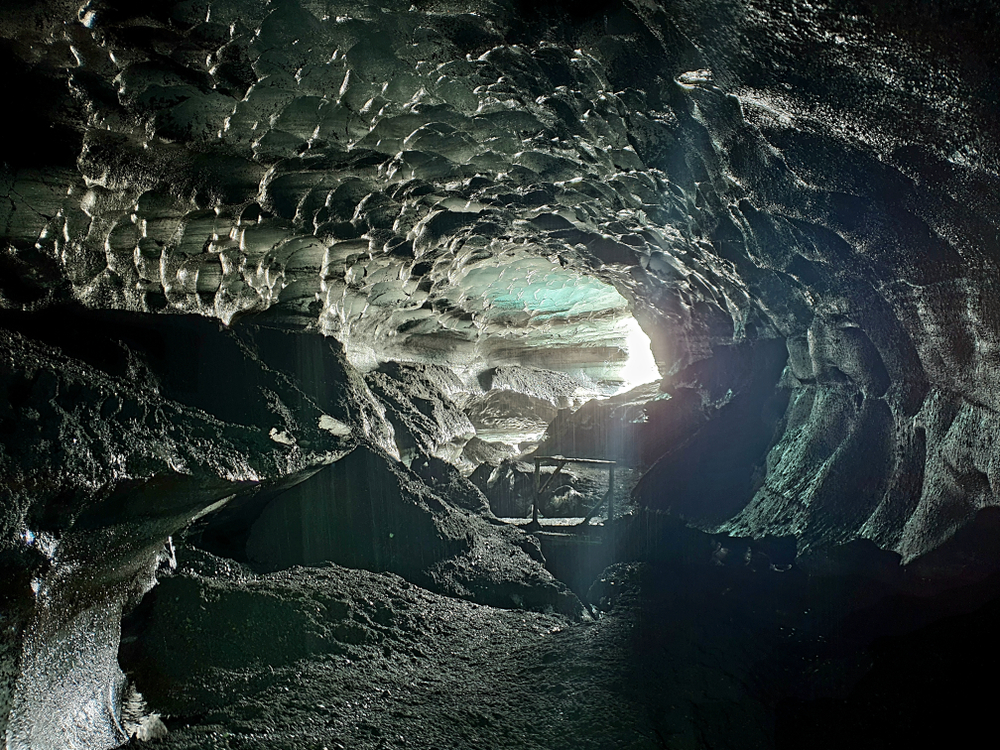
Katla Ice Cave offers a radically different experience with its ‘dragon glass’ formations – a striking mix of pure ice and black volcanic ash. Located beneath the Mýrdalsjökull glacier, this natural cave derives its unique character from its proximity to the Katla volcano, one of Iceland’s most active.
The tour generally starts from Vík í Mýrdal, accessible via Route 1. The journey by Super Jeep through the black volcanic sand is an adventure in itself. Inside the cave, the contrast is striking: the black streaks of volcanic ash mingle with the crystal-clear ice, creating abstract patterns of unsettling beauty.
This cave has the advantage of being accessible for most of the year, generally from May to October, offering a summer alternative to the caves of Vatnajökull. The experience combines moderate hiking, underground exploration and geological discovery, all set in an active volcanic environment reminiscent of Iceland’s telluric power.
4. Ice climbing on Sólheimajökull
For thrill-seekers, ice climbing on the Sólheimajökull glacier is one of Iceland’s most adrenalin-pumping experiences. This glacial tongue of Mýrdalsjökull, easily accessible from Route 1, offers ideal conditions for learning this spectacular discipline.
The adventure begins with full equipment: helmet, harness, crampons and ice axe. Certified guides teach the basic techniques before accompanying participants up the ice walls. Progress is gradual, from gentle slopes to more challenging vertical walls, allowing everyone to find their own comfort level.
The Sólheimajökull glacier is fascinating for its diversity: deep crevasses, unstable seracs, glacial mills and ice formations ranging in hue from pure white to deep blue. This palette of colours can be explained by the density and age of the ice, creating a unique playground for climbing. Experienced climbers can tackle the vertical formations, while beginners can enjoy the accessible slopes.
5. Hiking on the Skaftafell glacier
Skaftafell National Park, the gateway to Vatnajökull, offers glacier walks suitable for all levels. This experience allows you to appreciate the immensity of Europe’s largest glacier while discovering its exceptional geological features.
Equipped with crampons and supervised by experienced guides, hikers explore constantly changing terrain. The route reveals the secrets of glacial formation: spectacular crevasses, turquoise-blue moulines, streaks of volcanic ash and thousand-year-old ice formations. Every step on this living surface is a reminder of the powerful natural forces at work.
Hikes vary from 3 to 5 hours depending on the level chosen. The “Blue Ice” experience pushes deeper into the glacier, revealing areas where the compressed ice reaches sapphire-blue hues of striking intensity. These colours are the result of the extreme compression that drives out the air bubbles, allowing the light to penetrate deeper into the crystalline structure.
6. Explore the glacial expanses by snowmobile
Glacier snowmobiling offers a unique way to discover the immensity of Iceland’s ice caps. Available mainly on the Langjökull and Mýrdalsjökull glaciers, this activity combines adrenaline with the contemplation of polar landscapes.
On Langjökull, the experience begins at the base of Gullfoss, combining a visit to the Golden Circle with a glacier adventure. The snowmobile ride reveals endless stretches of white, punctuated by spectacular geological formations and panoramic views of the surrounding mountains. The guides offer photographic stops in grandiose settings where polar silence reigns supreme.
The adventure on Mýrdalsjökull from Vík offers a striking contrast, with its black volcanic landscapes contrasting with the immaculate whiteness of the glacier. This experience gives you an insight into Iceland’s duality of fire and ice, with exceptional panoramic views of the south coast and the Atlantic Ocean.
7. Discover the icebergs of Jökulsárlón lagoon
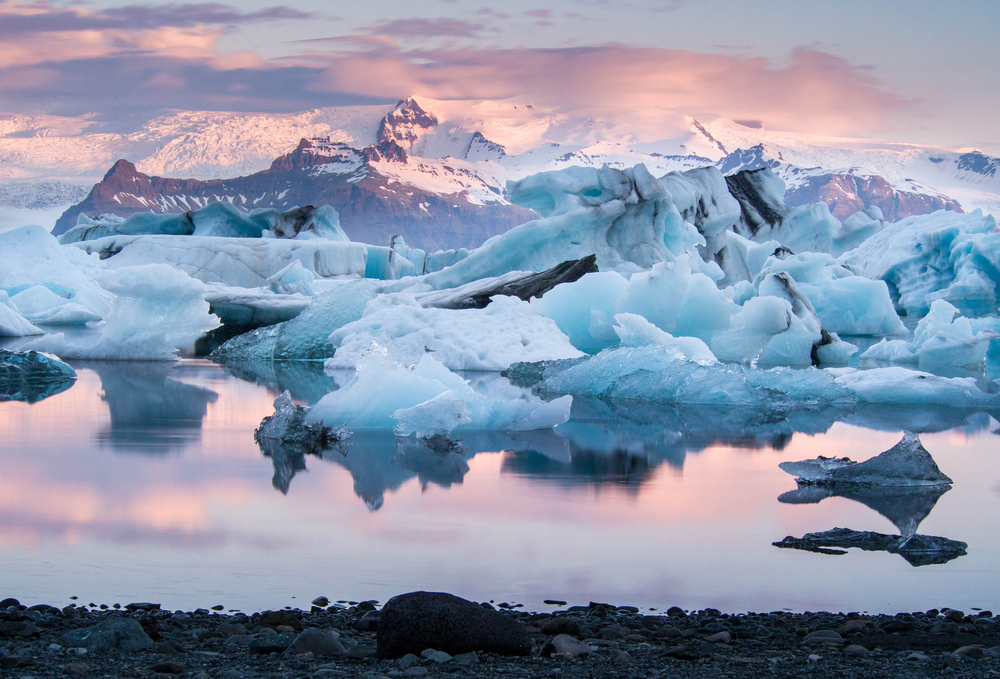
Although not strictly speaking an active glacier exploration, the Jökulsárlón lagoon offers an exceptional glacial spectacle accessible to all. This proglacial lagoon, formed by the melting of the Breiðamerkurjökull glacier, features a permanent ballet of icebergs in a variety of shapes and colours.
You can explore on foot along the banks, but the experience of an amphibious boat reveals all the magic of the site. Sailing between the icebergs allows you to observe their complex structures: cavities sculpted by the waves, coloured streaks testifying to their formation, and a chromatic palette ranging from snow-white to electric blue.
The adjacent Diamond Beach is the perfect complement to this discovery. On this beach of black volcanic sand, beached icebergs create a striking visual contrast, particularly spectacular at sunrise and sunset. This juxtaposition of thousand-year-old ice and volcanic sand perfectly sums up Iceland’s unique geological identity.
8. Taking part in specialised photographic expeditions
To immortalise these exceptional glacial experiences, specialised photographic expeditions combine exploration and technical training. Supervised by professional photographers and glacier guides, these tours offer privileged access to the most photogenic sites.
These expeditions focus on the golden and blue hours, when the northern light sublimates the glacial formations. Participants learn the techniques specific to photography in a glacial environment: managing extreme contrasts, protecting equipment from damp and cold, and composition in minimalist landscapes.
The advantage of these tours lies in their flexibility and access to secret locations. The photographic guides know the less-frequented caves, the exceptional viewing angles and the optimal conditions for capturing the glacial magic. Some expeditions even include night sessions to photograph the Northern Lights above the glaciers, creating compositions of supernatural beauty.
9. Combining glacier exploration and wildlife observation
Iceland’s glacial environments are home to wildlife that is remarkably well adapted to the extreme conditions. Combining glacial exploration with wildlife watching is a great way to enhance the experience, particularly around Jökulsárlón and in the south-eastern fjords.
Seals are regular visitors to the glacial lagoon, resting on the icebergs or hunting in the fish-rich waters. You can observe these marine mammals with total respect, from the shore or during boat excursions. Their presence adds a living dimension to this mineral landscape.
Arctic terns also nest in the region during the boreal summer. These migratory birds, champions of intercontinental travel, soar gracefully above the icebergs. Jaegers and other seabirds complete this unique ornithological picture, creating a natural symphony in these icy landscapes.
10. Plan according to season to optimise the experience
Timing is crucial when it comes to exploring Iceland’s glaciers and ice caves. Each season offers distinct experiences, with specific advantages and constraints that you need to be aware of when planning your trip.
Winter (November to March) is the peak season for natural ice caves. The sub-zero temperatures stabilise the glacial formations, allowing safe access to the caves of Vatnajökull. This period also offers the best chances of observing the Northern Lights above the glaciers, creating unforgettable magical moments.
Summer (June to August) favours surface activities: glacier trekking, ice climbing and snowmobiling. Long days (up to 20 hours of daylight) allow for extensive exploration, while milder weather conditions make it easier to access remote sites. It’s also the ideal time of year to combine glacier exploration with observation of Arctic wildlife.
The shoulder seasons (April-May and September-October) offer interesting compromises: generally stable weather, moderate tourist numbers and the possibility of access to certain caves depending on conditions. These periods are particularly suitable for photographers looking for exceptional light conditions.
In conclusion, exploring Iceland’s glaciers and ice caves is a transformative experience that reveals the power and beauty of Arctic nature. Whether you choose the adrenalin of ice climbing, contemplation in the tunnels of Langjökull, or wonder at the crystal formations of Vatnajökull, each glacial adventure forges lasting memories. Don’t forget to start your Icelandic tour with a guided discovery of Reykjavik, the gateway to these exceptional natural wonders. Iceland awaits you for these unique experiences, where each step on the thousand-year-old ice connects you to the geological history of our planet.
Frequently asked questions
When is the best time to visit Iceland’s ice caves?
The best time to visit the natural ice caves is from November to March, when the cold temperatures stabilise the glacial formations. Artificial caves such as Langjökull or Katla are open all year round.
What equipment do you need to explore the glaciers?
Safety equipment (crampons, ice axes, helmets, harnesses) is generally provided by tour operators. We recommend that you wear warm waterproof clothing, sturdy hiking boots and bring gloves, a hat and sunglasses.
Are glacier activities accessible to beginners?
Yes, most activities offer beginner levels with professional supervision. Basic glacier treks, cave visits and artificial tunnels are suitable for beginners. Ice climbing requires a minimum level of physical fitness, but is accessible with instruction.
How much do glacier excursions in Iceland cost?
Prices vary according to the activity: €150-200 for an ice cave visit, €100-150 for a glacier hike, €200-300 for ice climbing, and €300-400 for snowmobile expeditions. These prices generally include guide, equipment and transport from the meeting points.
200 audioguided tours for cities all around the world
Download